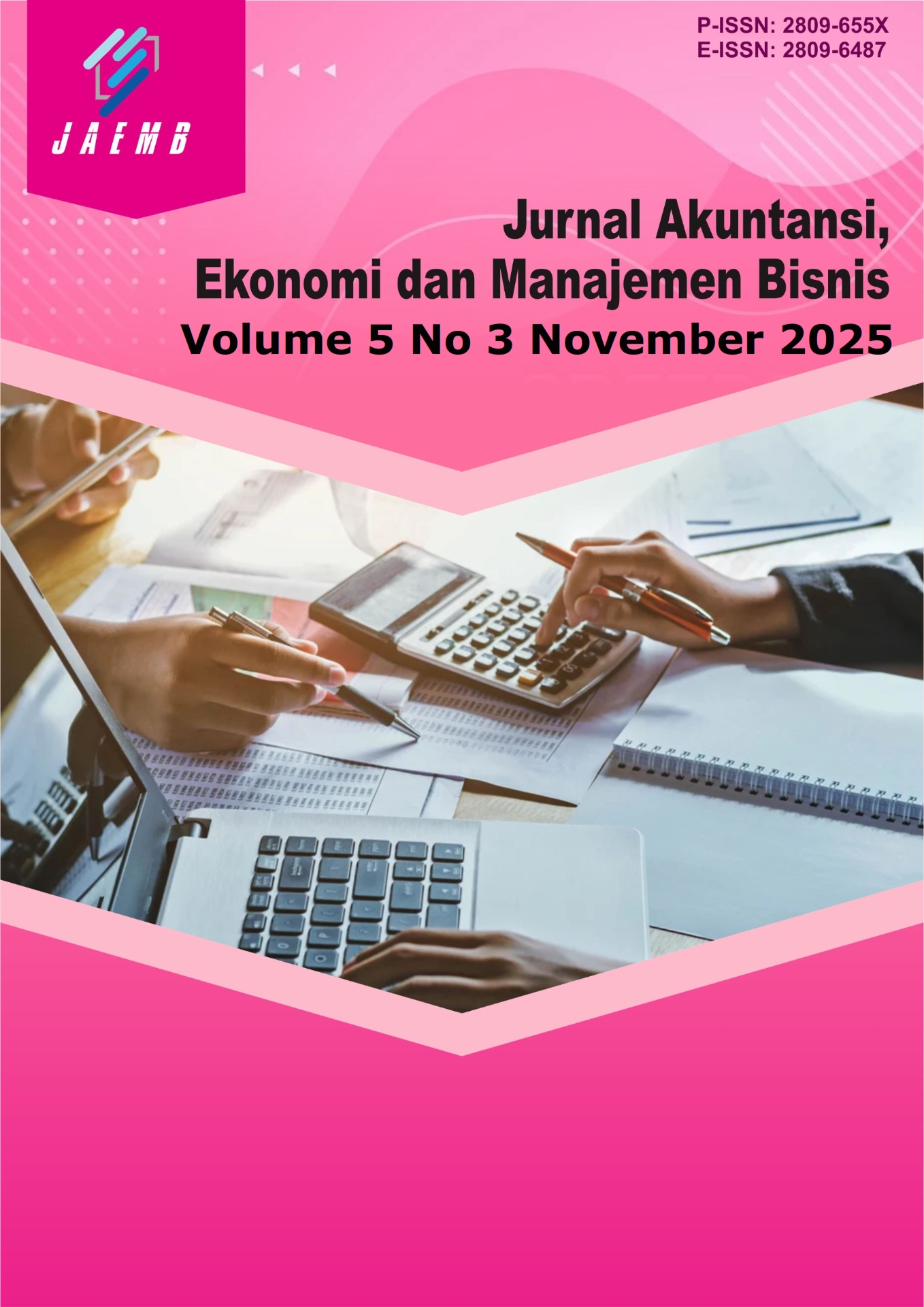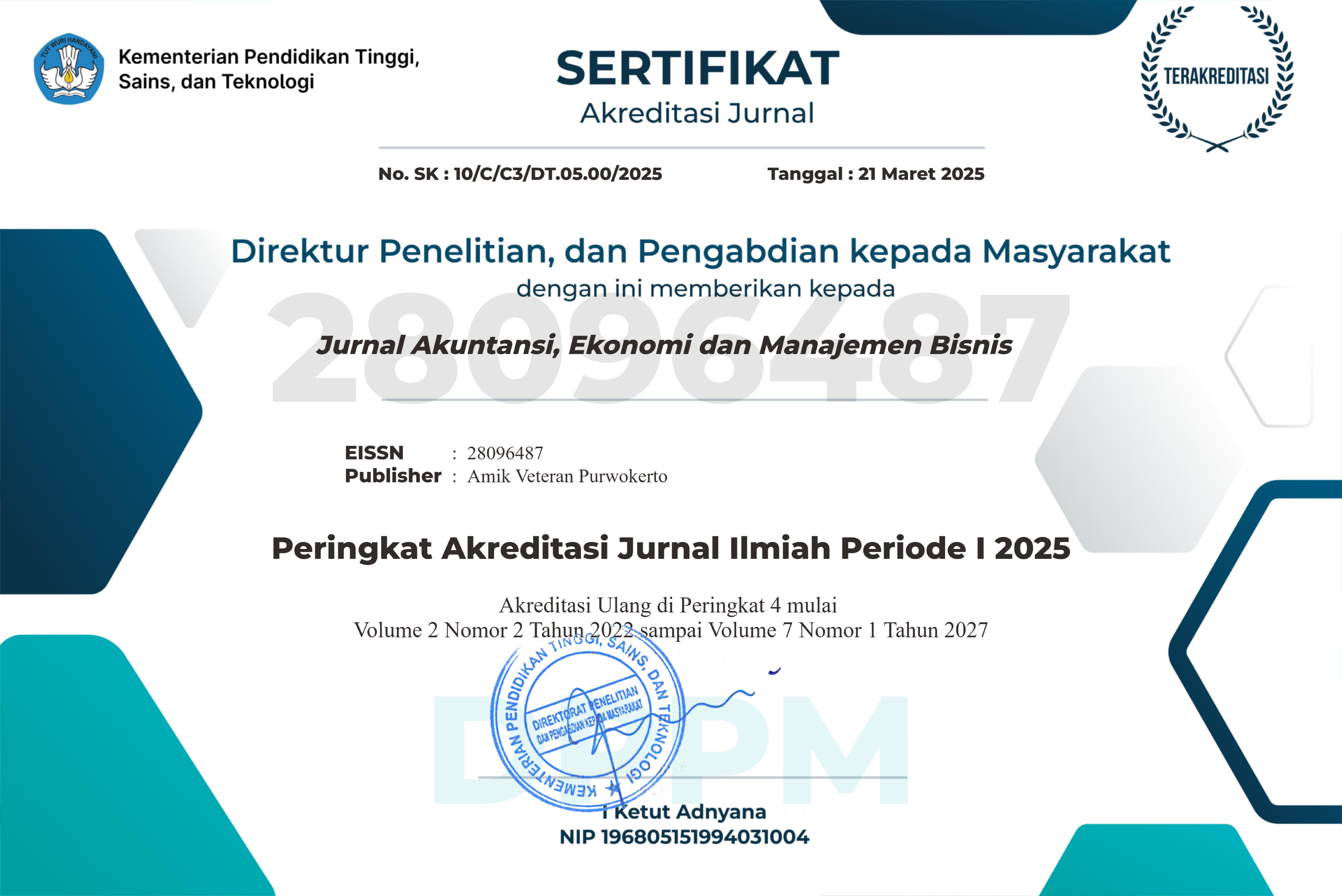Analisis Manfaat dan Keuntungan Marriott Bonvoy Aplikasi Terhadap Loyalitas Tamu di Sheraton Abu Dhabi Hotel and Resort
DOI:
https://doi.org/10.55606/jaemb.v5i3.7349Keywords:
marriott bonvoy, guest loyalty, mobile application, hospitality industry, digital technologyAbstract
This study aims to analyze the benefits and advantages of the Marriott Bonvoy application on guest loyalty at Sheraton Abu Dhabi Hotel and Resort. The increasingly competitive hospitality industry requires hotels to implement innovative digital strategies to maintain and enhance guest loyalty. The main problem identified is the lack of comprehensive understanding regarding how functional, hedonic, and social benefits of the Marriott Bonvoy application influence guest loyalty in premium hotels in the Middle East region. This research employs a quantitative approach with descriptive and causal research design. Data were collected through structured online questionnaires distributed to 31 respondents who are guests of Sheraton Abu Dhabi Hotel and Resort and users of the Marriott Bonvoy application during July 4-6, 2025. The sampling technique used purposive sampling based on specific criteria. Data analysis utilized multiple linear regression with validity and reliability testing, classical assumption tests, and hypothesis testing using IBM SPSS version 29.0. The main findings reveal that all three benefit dimensions significantly influence guest loyalty, with functional benefits having the strongest impact (β = 0.385), followed by hedonic benefits (β = 0.341) and social benefits (β = 0.198). The model explains 61.8% of the variance in guest loyalty. Functional benefits such as booking convenience, mobile check-in, and mobile key features provide the greatest contribution to guest loyalty enhancement. This research concludes that the integration of digital technology through the Marriott Bonvoy application serves as an effective strategy for improving guest satisfaction and loyalty in the premium hospitality industry.
References
[1] D. Buhalis dan R. Law, “Progress in information technology and tourism management: 20 years on and 10 years after the Internet—The state of eTourism research,” Tour. Manag., vol. 29, no. 4, hal. 609–623, Agu 2008, doi: 10.1016/j.tourman.2008.01.005.
[2] S. Melián-González, J. Bulchand-Gidumal, dan B. González López-Valcárcel, “New evidence of the relationship between employee satisfaction and firm economic performance,” Pers. Rev., vol. 44, no. 6, hal. 906–929, Sep 2015, doi: 10.1108/PR-01-2014-0023.
[3] J. J. Kim, B.-L. Chua, dan H. Han, “Mobile hotel reservations and customer behavior: Channel familiarity and channel type,” J. Vacat. Mark., vol. 27, no. 1, hal. 82–102, Jan 2021, doi: 10.1177/1356766720952122.
[4] Marriott International Inc, “Marriott International Announces Marriott Bonvoy - The New Brand Name Of Its Loyalty Program,” PR Newswire. Diakses: 10 Juni 2025. [Daring]. Tersedia pada: https://www.prnewswire.com/news-releases/marriott-international-announces-marriott-bonvoy--the-new-brand-name-of-its-loyalty-program-300779267.html#:~:text=Marriott Bonvoy is the company’s,is more achievable than ever.
[5] L. Chen, A. Baird, dan D. Straub, “Why do participants continue to contribute? Evaluation of usefulness voting and commenting motivational affordances within an online knowledge community,” Decis. Support Syst., vol. 118, hal. 21–32, Mar 2019, doi: 10.1016/j.dss.2018.12.008.
[6] H. Kim, S. Kang, C. Song, dan M. J. (Mj) Lee, “How Hotel Smartphone Applications Affect Guest Satisfaction in Applications and Re-use Intention? An Experiential Value Approach,” J. Qual. Assur. Hosp. Tour., vol. 21, no. 2, hal. 209–233, Mar 2020, doi: 10.1080/1528008X.2019.1653242.
[7] M. A. Al‐hawari dan S. Mouakket, “The influence of technology acceptance model (TAM) factors on students’ e‐satisfaction and e‐retention within the context of UAE e‐learning,” Educ. Bus. Soc. Contemp. Middle East. Issues, vol. 3, no. 4, hal. 299–314, Nov 2010, doi: 10.1108/17537981011089596.
[8] P. Kotler dan K. L. Keller, Marketing Management, 15th ed. Boston: Pearson, 2016.
[9] J. Kandampully, T. (Christina) Zhang, dan A. Bilgihan, “Customer loyalty: a review and future directions with a special focus on the hospitality industry,” Int. J. Contemp. Hosp. Manag., vol. 27, no. 3, hal. 379–414, Apr 2015, doi: 10.1108/IJCHM-03-2014-0151.
[10] R. Rahimi dan M. Kozak, “Impact of Customer Relationship Management on Customer Satisfaction: The Case of a Budget Hotel Chain,” J. Travel Tour. Mark., vol. 34, no. 1, hal. 40–51, Jan 2017, doi: 10.1080/10548408.2015.1130108.
[11] S. Tanford, C. Raab, dan Y.-S. Kim, “Determinants of customer loyalty and purchasing behavior for full-service and limited-service hotels,” Int. J. Hosp. Manag., vol. 31, no. 2, hal. 319–328, Jun 2012, doi: 10.1016/j.ijhm.2011.04.006.
[12] F. D. Davis, “Perceived Usefulness, Perceived Ease of Use, and User Acceptance of Information Technology,” MIS Q., vol. 13, no. 3, hal. 319, Sep 1989, doi: 10.2307/249008.
[13] A. Boukis, “The effect of tokenized rewards on customer loyalty programs,” Ann. Tour. Res., vol. 109, hal. 103851, Nov 2024, doi: 10.1016/j.annals.2024.103851.
[14] S. E. Kimes, “The future of hotel revenue management,” J. Revenue Pricing Manag., vol. 10, no. 1, hal. 62–72, Jan 2011, doi: 10.1057/rpm.2010.47.
[15] Marriott International Inc, “Marriott Bonvoy 2023 Annual Report,” Marriott International Inc. Diakses: 10 Juni 2025. [Daring]. Tersedia pada: https://marriott.gcs-web.com/static-files/bb2be39e-790e-49c3-b247-3ce75f0e3ee8
[16] M. Schuckert, X. Liu, dan R. Law, “Hospitality and Tourism Online Reviews: Recent Trends and Future Directions,” J. Travel Tour. Mark., vol. 32, no. 5, hal. 608–621, Jul 2015, doi: 10.1080/10548408.2014.933154.
[17] K. L. Xie, Z. Zhang, dan Z. Zhang, “The business value of online consumer reviews and management response to hotel performance,” Int. J. Hosp. Manag., vol. 43, hal. 1–12, Okt 2014, doi: 10.1016/j.ijhm.2014.07.007.
[18] D. Buhalis dan A. Amaranggana, “Smart Tourism Destinations Enhancing Tourism Experience Through Personalisation of Services,” in Information and Communication Technologies in Tourism 2015, Cham: Springer International Publishing, 2015, hal. 377–389. doi: 10.1007/978-3-319-14343-9_28.
[19] J. Murphy, U. Gretzel, dan J. Pesonen, “Marketing robot services in hospitality and tourism: the role of anthropomorphism,” J. Travel Tour. Mark., vol. 36, no. 7, hal. 784–795, Sep 2019, doi: 10.1080/10548408.2019.1571983.
[20] V. Venkatesh dan H. Bala, “Technology Acceptance Model 3 and a Research Agenda on Interventions,” Decis. Sci., vol. 39, no. 2, hal. 273–315, Mei 2008, doi: 10.1111/j.1540-5915.2008.00192.x.
[21] A. B. Ozturk, A. Bilgihan, K. Nusair, dan F. Okumus, “What keeps the mobile hotel booking users loyal? Investigating the roles of self-efficacy, compatibility, perceived ease of use, and perceived convenience,” Int. J. Inf. Manage., vol. 36, no. 6, hal. 1350–1359, Des 2016, doi: 10.1016/j.ijinfomgt.2016.04.005.
[22] F. (Sam) Li, D. Zhu, M.-T. (Brian) Lin, dan P. B. Kim, “The Technology Acceptance Model and Hospitality and Tourism Consumers’ Intention to Use Mobile Technologies: Meta-Analysis and Structural Equation Modeling,” Cornell Hosp. Q., vol. 65, no. 4, hal. 461–477, Nov 2024, doi: 10.1177/19389655241226558.
[23] R. L. Oliver, “Whence Consumer Loyalty?,” J. Mark., vol. 63, no. 4_suppl1, hal. 33–44, Okt 1999, doi: 10.1177/00222429990634s105.
[24] R. L. Oliver, Satisfaction: A Behavioral Perspective on the Consumer. Routledge, 2014. doi: 10.4324/9781315700892.
[25] L. Aksoy, B. Cooil, C. Groening, T. L. Keiningham, dan A. Yalçın, “The Long-Term Stock Market Valuation of Customer Satisfaction,” J. Mark., vol. 72, no. 4, hal. 105–122, Jul 2008, doi: 10.1509/jmkg.72.4.105.
[26] C. Xu, D. Peak, dan V. Prybutok, “A customer value, satisfaction, and loyalty perspective of mobile application recommendations,” Decis. Support Syst., vol. 79, hal. 171–183, Nov 2015, doi: 10.1016/j.dss.2015.08.008.
[27] J. Mo Kwon, J. (Stephanie) Bae, dan S. C. Blum, “Mobile applications in the hospitality industry,” J. Hosp. Tour. Technol., vol. 4, no. 1, hal. 81–92, Mar 2013, doi: 10.1108/17579881311302365.
[28] H. Park, M. Lee, K.-J. Back, A. DeFranco, dan J. Suh, “Dynamic roles of hotel mobile application in customer satisfaction and dissatisfaction: integrating text analytics and impact asymmetry analysis,” Int. J. Contemp. Hosp. Manag., vol. 37, no. 5, hal. 1622–1640, Apr 2025, doi: 10.1108/IJCHM-12-2023-1914.
[29] Marriott International Inc, “Marriott International Reports Third Quarter 2023 Results,” Marriott International Inc. Diakses: 10 Juni 2026. [Daring]. Tersedia pada: https://marriott.gcs-web.com/news-releases/news-release-details/marriott-international-reports-third-quarter-2023-results#:~:text=Third Quarter 2023 Results,-Marriott’s reported operating&text=Reported net income totaled %24752 million in the 2023 third,in the year-ago quarter.
[30] A. Bilgihan, “Gen Y customer loyalty in online shopping: An integrated model of trust, user experience and branding,” Comput. Human Behav., vol. 61, hal. 103–113, Agu 2016, doi: 10.1016/j.chb.2016.03.014.
[31] M. Hamouda, “Mobile Applications in Tourism,” Int. J. Technol. Hum. Interact., vol. 18, no. 1, hal. 1–13, Jan 2022, doi: 10.4018/IJTHI.293198.
[32] A. Bilgihan, K. Nusair, F. Okumus, dan C. Cobanoglu, “Applying flow theory to booking experiences: An integrated model in an online service context,” Inf. Manag., vol. 52, no. 6, hal. 668–678, Sep 2015, doi: 10.1016/j.im.2015.05.005.
[33] J. W. Creswell dan J. D. Creswell, Research Design: Qualitative, Quantitative, and Mixed Methods Approaches (5th Edition). SAGE Publications, Inc, 2018.
Downloads
Published
How to Cite
Issue
Section
License
Copyright (c) 2025 Jurnal Akuntansi, Ekonomi dan Manajemen Bisnis

This work is licensed under a Creative Commons Attribution-ShareAlike 4.0 International License.








